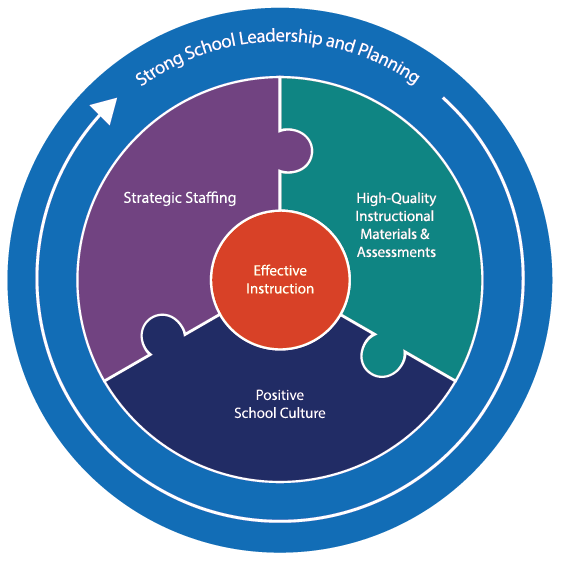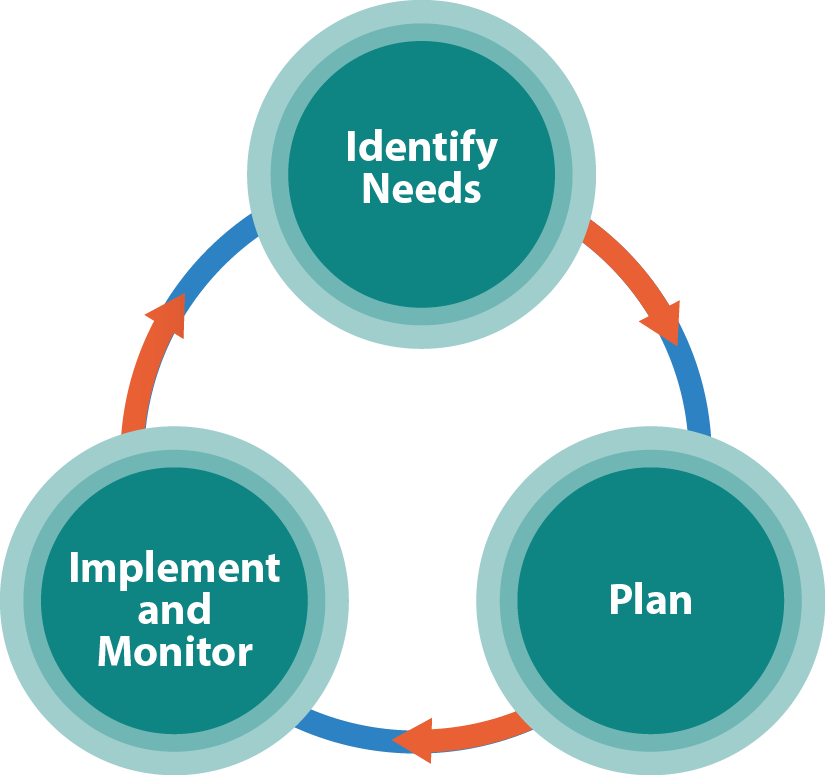The Texas Education Agency (TEA) developed the Effective Schools Framework (ESF) as a guide to establish a clear vision for districts and schools across the state. The ESF recognizes best practices and describes specific actions that high-performing districts and campuses implement to have a strong impact on student outcomes.
The Effective Schools Framework consists of five levers. Within each lever, you will find District Commitments, Essential Actions, Key Practices, and Success Criteria. Let’s take a look at what they are and how they all work together.
Components of the Effective Schools Framework

Levers are the guiding principles that work together to provide a strong foundation for an effective school.
- Lever 1 – Strong School Leadership and Planning
- Lever 2 – Strategic Staffing
- Lever 3 – Positive School Culture
- Lever 4 – High-Quality Instructional Materials & Assessments
- Lever 5 – Effective Instruction
District Commitments
Within each lever, the ESF outlines District Commitments. These describe how districts set up their campuses for success. In other words, foundational support and structures must be in place at the district level for campuses to be high-performing.
Essential Actions
Each lever includes Essential Actions. The Essential Actions describe what the most effective schools do to support powerful teaching and learning. Moreover, these also help build a common language around high-leverage best practices across the state.
The first Essential Action listed under each lever is considered foundational. Therefore, campuses and districts seeking continuous improvement should address the foundational Essential Actions first, as they provide the foundation on which schools and districts build the other essential actions.
Key Practices
Each Essential Action contains Key Practices that detail the systems and practices campuses should implement.
Success Criteria
The Success Criteria for each Key Practice show what it looks and sounds like when schools implement it with fidelity. As a result, campuses should use the success criteria to determine alignment when creating or evaluating systems and practices.
The ESF Diagnostic provides a comprehensive, non-biased view of a campus’s alignment with the Effective Schools Framework. This diagnostic can serve as the campus’s comprehensive needs assessment and is beneficial for all schools, not just those engaged in school improvement.
What is the ESF Diagnostic Process?

The diagnostic process involves collecting evidence for each lever through artifact submission, campus observations, and focus groups to determine the campus’s strengths and areas of opportunity. A trained ESF Facilitator collaborates with the campus principal and principal supervisor to collect all evidence and compile a final report. In the end, the campus selects the two highest leverage Essential Actions to focus on for improvement.
Bring the ESF Diagnostic Process to your campus by emailing Tai Choice at tai.choice@esc13.txed.net.
Six-step process for the ESF Diagnostic
The ESF diagnostic process focuses on six Essential Actions:
- Local Classroom Review (LCR): blank student assignments for each grade level in Reading, Language Arts, and math are submitted to determine the answer to two questions: (1) How consistently are instructional materials used in the classroom that are adopted by the school or school system? (2) How consistently are assignments issued to students at their grade level?
- Pre-work collection and artifact submission: Next, the campus submits two artifacts for each lever to illustrate systems and practices aligned with the ESF Key Practices.
- Pre-visit conversation: Two-hour conversation with the ESF Facilitator, campus principal, and principal supervisor to plan the campus visit and provide additional details on campus systems and practices aligned to the framework.
- Campus visit: Full day visit with ESF Facilitator, campus principal, and principal supervisor consisting of classroom observations, a PLC or data meeting observation, and teacher and administrator focus groups.
- Post-visit conversation: Three-hour discussion to review the draft final report, including identifying campus strengths and areas of opportunity, and selecting the two highest-leverage Essential Actions to strengthen.
- Final report: The final report presents all collected evidence, explains how it aligns to the framework, highlights campus strengths and areas of opportunity, and names focus areas and possible barriers.
Districts and campuses seeking to support their organization in continuous improvement efforts can request an ESF Diagnostic through their local Education Service Center.
For more information on the Effective Schools Framework, visit: texasesf.org.
Updated September 2025





Add comment